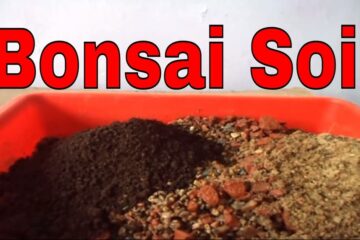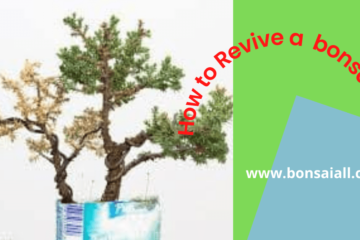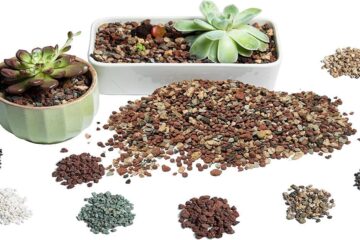Bonsai trees are popular for a reason – they are beautiful and easy to care for. In this article, we will show you how to water a bonsai tree indoor, using simple techniques that anyone can follow. By following these steps, you will ensure that your bonsai tree receives the proper amount of water and nutrients and that it remains healthy and happy.
How Water a Bonsai Tree indoor?
Content Overview
In The Penelopiad, Margaret Atwood beautifully reminds us that we are all “half water.” So whenever we cannot go through an obstacle, we can always “go around it” – just like “water does.”
Making bonsai soil for better water retention
To make your bonsai healthy and look good, you need to fill its soil with plenty of nutrients and provide it with the correct humidity. The most crucial ingredients in caring for bonsai soil are Akadama, Pumice, Lava rock, gravel, and grit.
To fertilize the soil, you can use organic potting compost from stores and nurseries. Add the grit layer to the bottom of the bed, which is closest to the roots. You need to place the gravel/grit as the bottom layer.
Putting this material on the bottom allows it to absorb more water than the other ingredients.
It is possible to mix different parts of Akadama with crushed Pumice to create a proper soil for bonsai.
Akadama and pumice soil retain an adequate amount of water and keep the soil moist for a long time. This prevents the roots from rotting and keeps the tree stable.
Lava rock soil works best when it is at the top of the pot. There are small holes in the lava rocks, which make perfect air pockets.
Planting bonsai trees in organic soil compost helps them to grow; when mixed with bonsai soil, the compost made from peat moss, sand, and perlite will be the best choice.
Common mistakes when watering indoor trees
The most common mistakes made when watering indoor trees are over-watering and underwatering. While both can be very damaging to your tree, over-watering is most often at fault.
The best way to know if you’re watering your tree enough is to check on its soil weekly. If it’s already damp, don’t water it again until there is clearly visible dry soil. When in doubt, under-water your trees instead of over-watering them!
Underwatering trees can be just as harmful as over-watering. Underwatering occurs when your tree doesn’t get enough water, which will eventually lead to brown leaves and worse. In extreme cases, your tree may even die from being underwater for too long.
Often should Water the indoor Bonsai Tree?
As stated above, the watering frequency depends on many factors to provide an exact rule. Instead of routinely watering, you need to learn to watch your trees and learn when they need to be watered. Of course, a very hot climate or the existence of wind will make it necessary to water more frequently. The following recommendations will help you properly water your Bonsai:
Misting
Misting is a misting technique that helps the plant to grow faster and develop better. The misting can be done by placing an absorbent material in water, like cotton or paper towels, on top of the soil. This will create micro-sprinkles of moisture that help promote healthy growth and prevent fungal diseases from spreading among plants. Misting also makes it easier for your bonsai tree to take up nutrients via its roots.
Water Your Bonsai when the soil is a little dry
This means that you should not water your Bonsai when the soil is still wet, only when it is slightly dry. You can use your fingers to check how wet the surface (and inside) of the soil is. As you gain experience you will be able to see (and notice) when a tree needs to be watered.
You can follow the watering routine for your bonsai plant:
Properly, watering your bonsai, with the right amount and frequency is necessary.
Watering it regularly will help make your bonsai healthier and, in a short time, you will have a miniaturized tree that reflects its full-grown version.
Depending on the type of tree and its category, the watering frequency might be different.
If your bonsai is deciduous, you should water it every other day as a tree is growing. When it is larger, you can water it every day. But watch the amount so that you do not overwater.
We must care for this kind of bonsai very precisely. They must be watered whenever the soil appears dry.
Even if a tree is already moist or wet and it will not rain for at least one day, do not water it. Coniferous trees’ roots can rot if watered too much.
In the case that your bonsai is in the evergreen category, water it three times a week.
Alternatively, if you’re on the more frugal side, you can only water it occasionally, depending on your bonsai.
If you have multiple bonsai trees, but they are all different species, you cannot follow the same watering pattern for each tree.
By looking at the soil and the potting of the trees, you can determine when to water your plants.
Once you know for sure that your tree needs water, you can use caution to ensure you do not over or underwater it.
Last but not least, Observe your trees individually rather than water them on a daily basis until you know exactly what you are doing.
Use the right soil mix
The soil mix has a great influence on how often it should be watered. For most Bonsai, a mixture of akadama, pumice, and lava rock mixed in a ½ – ¼ – ¼ ratio may be fine.
You should however use a more water-retentive mix (use a higher proportion of akadama for this) when you cannot water your trees often enough. Read the Bonsai Soil Mixes article for more detailed information on this topic.
When should I water?
It really doesn’t matter what time of day you water, although it is recommended not to water regularly in the middle of the day. At that time the pot and the soil are very hot due to sunlight, irrigation would lower its temperature very quickly when irrigating with fresh water. In any case, it will always be better to water than to let our trees dry out under a scorching sun!
How should I water a Bonsai?
As explained above, water when the soil is slightly dry. When the tree needs to be watered, do it abundantly, enough water is needed so that the root ball is soaked and the entire root system is completely moist. To do this, continue watering until the water comes out of the drainage holes and, if possible, repeat the operation a few minutes later
Water the Bonsai from above using a watering can with a fine hole nozzle to avoid dragging soil out of the pot. The use of rainwater or osmosis water is the best (they do not contain added chemical products such as chlorine, or a large number of salts), but if you do not have it, there is no problem with using tap water.
Best Method How to Water a Bonsai tree indoors
You have to give outdoor and indoor bonsai lots of different attention at different frequencies, whether they are placed in the sun or not. For indoor bonsai, make sure it is near a south-facing window so it gets all the necessary nutrients from the sun.
In many places of the world, you can take bonsai outdoors during the summer, fall, and spring. Winter would be too cold for it.
During these three seasons, it is easy to water the plant without overwatering it. But once winter rolls around and the sun has decreased, you need to take care not to overwater it.
If you’re interested in keeping an indoor bonsai, there are three main methods for watering them.
Bottom watering
If you just started to raise a bonsai and your tree does not mimic a fully-grown tree yet, you can try this watering method on the bottom.
A lot of people like to use this watering method because it is easier to take care of. If you are interested in the bottom watering method, all you need to do is
Put a small tub, container, or bucket with water.
Fill the bottom of the pot with soil and insert the roots of the bonsai tree into the water.
Be sure that the water covers the bottom of the bonsai pot so that it can absorb the water.
You’ll want to keep your bonsai pot from sitting for more than half an hour; as time elapses, it may produce unwanted growth on the roots.
Once 30 minutes have passed, you can move the bonsai pot, and then set it down gently.
Repeating this process every two days or whenever the upper layer of soil feels dry will create a well-maintained garden
Top watering
If you’ve ever grown a garden, you’re likely familiar with one of the most popular methods of watering, known as top watering.
There are two options for this. You can either use a hose with holes on the nozzle or use a watering can.
This technique is most effective as the holes mimic rainfall, which in turn allows the soil and roots to better absorb water.
Using this method works best for an overgrown bonsai tree because it requires more water than the smaller bonsai.
Simply stand above the tree with a watering can or hose and pour the water onto the ground below until it reaches the desired level.
Because you’re growing an indoor bonsai, having a humidity tray beneath the pot will keep any water overflow from spilling on the floor and staining it.
Kitchen sink
If you have an indoor bonsai, you can also water it under the kitchen sink. Make sure that the pot carrying the tree doesn’t cause any issues.
Put the bonsai tree’s pot in the sink under the flowing water, and allow the water to pass through the soil thoroughly. Once the water has flowed through the pot’s drainage hole, move the pot back to its spot.
Therefore, if you are preparing to plant an indoor bonsai tree, you need to know which trees to choose, where to place the bonsais and how to take care of them.
Some indoor bonsais will also utilize intense growing lamps as a substitute for sunlight.
Put your bonsai tree in a spot where it will receive optimal sunlight, as well as changes from the seasons.
How is watering an indoor bonsai different from watering outdoor bonsai?
You will also have to water your indoor bonsai more frequently than outdoor ones, so remember that you cannot water them just once. Be sure to check for moisture on a daily basis by pushing your finger about an inch into the soil. If it feels moist, do not water yet. If not, give it a little bit of water and wait till it is dry again before watering again.
An indoor bonsai will need to be watered more frequently than an outdoor one. You cannot allow an indoor bonsai tree to completely dry out between waterings. Because it is indoors, its humidity levels are much lower and it needs to be watered daily. Because of lower humidity levels in your home, watering your indoor bonsai is a little bit different than watering your outdoor one.
In addition to daily watering, you will also need to feed your indoor bonsai more often than an outdoor one. Daily feeding is a must for your indoor bonsai because of the lower humidity levels in your home. When watering, be sure not to overwater as it can cause root rot which is bad for all trees, even inside ones. Remember that if you choose to water by hand it is better to make several small wettings than it is one large one.
In this article, we have provided you with the proper watering methods for indoor bonsai trees. By following the steps outlined in this article, you will be able to water your bonsai tree in the correct way, ensuring that it receives the right amount of water and nutrients. Thank you for reading!.



